The Alquife mining area in Granada province, Andalucia and the British companies that worked them
By Nick Nutter | Updated 18 Mar 2022 | Andalucia | History |
Login to add to YOUR Favourites or Read Later
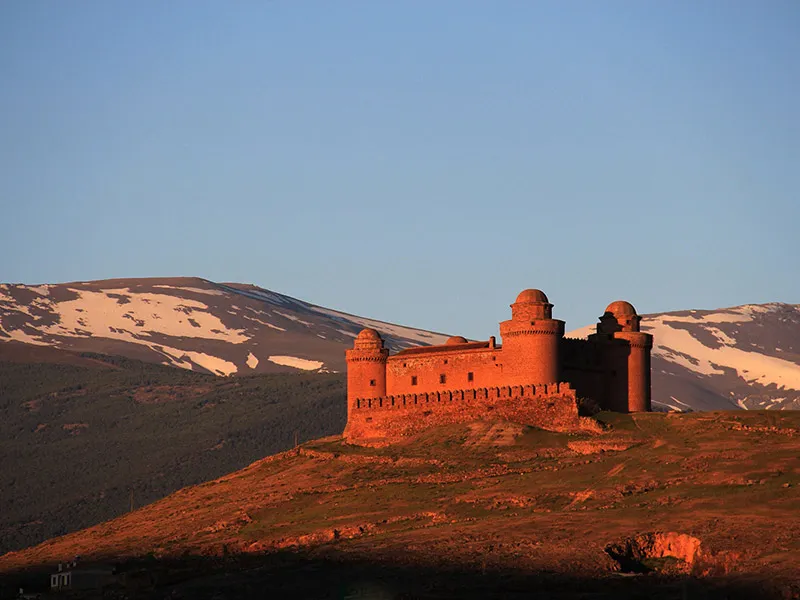
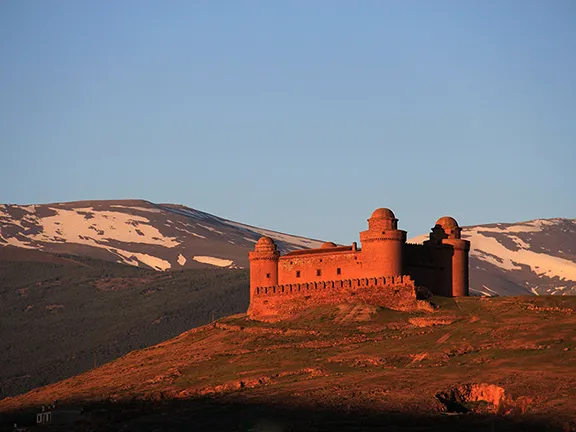
La Calahorra
The Muslims knew that when they built the Alhambra, they were building it alongside a hill, the Cerro del Sol, that had been mined for gold by the Romans and that even today is thought to hold significant reserves of this most sought after metal.
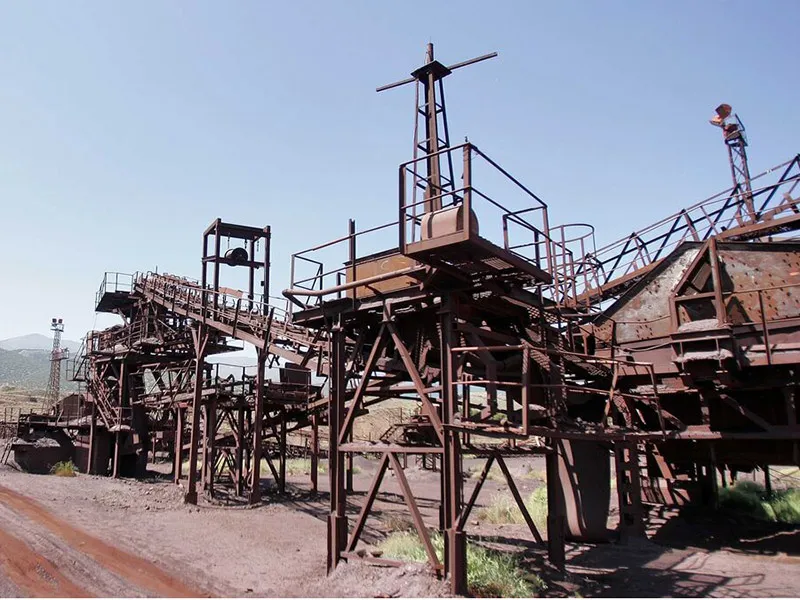
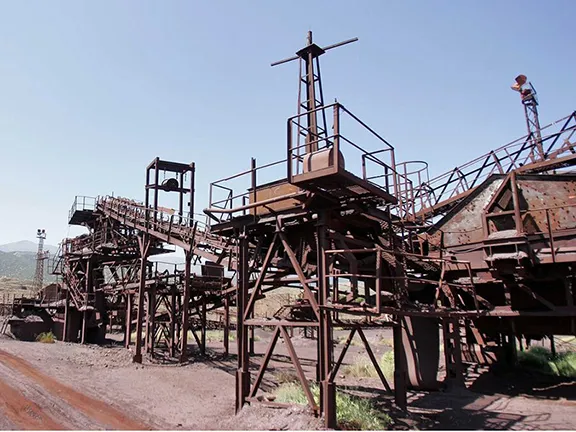
The Romans used a method of mining that would be frowned upon in today’s world, at least in developed countries, and I am not talking about using slaves. They sought out traces of metal in the conglomerate outcropping on the surface in clefts running up the hill. Then they built a dam at the head of the cleft and filled it with water from a specially built aqueduct. When it was full of water the dam was breached to allow the water to sweep down the valley removing tons of material as it went, including the conglomerate containing gold. The rock was then collected in a pond and channelled through a system of gutters to isolate the gold. The method had a name, ‘Ruina Montium’. The scar created is still visible today. Between 1875 and 1877, a French company used a similar technique, powerful water jets, to work the same scar. They separated the gold by a process of amalgamation with mercury.
The gold originates in an alluvial deposit some 200 metres thick and up to 5 million years old, called, appropriately, ‘The ‘Alhambra Formation’ that consists of material eroded from an even older deposit, the 23 million year old Miocene Conglomerate. The cycles of deposition and erosion concentrated the gold, much as the Ruina Montium method did, except on a grander scale. The Genil and Darro rivers cut across the Alhambra Formation and the placer deposits created in both rivers have been panned for gold during historical times.
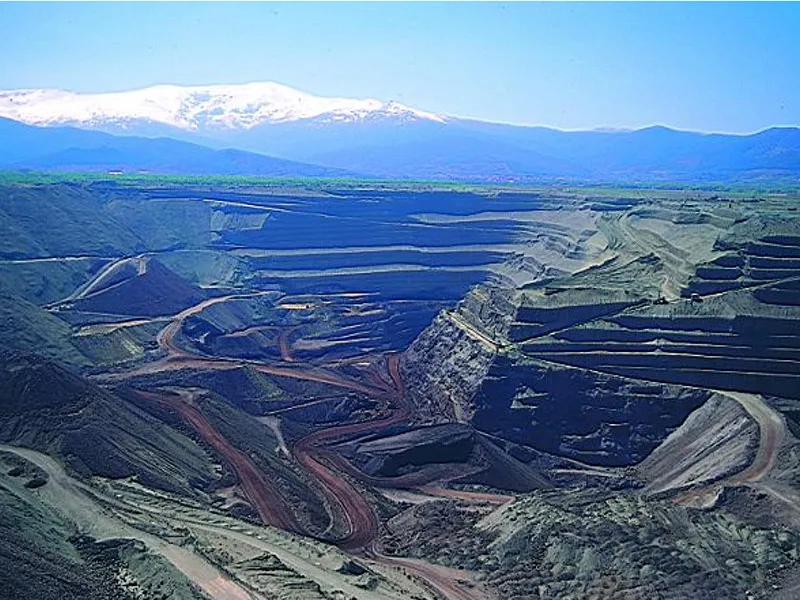
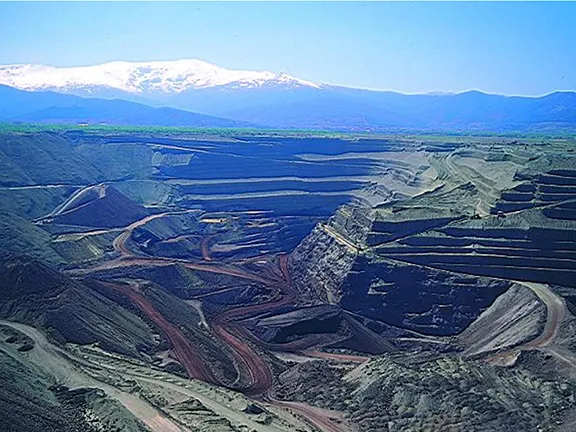
Alquife Mine
Granada is sandwiched between Almeria to the southeast and Jaen to the northwest and compared to those provinces has less metalliferous areas to exploit. For that reason only nine British companies were registered to work mines in Granada. Much of the province is taken up by the massive Hoya de Baza and it is on the borders of the depression that some metal deposits have been found. One of the most productive is the Alquife haematite deposit on the plain south of Guadix.
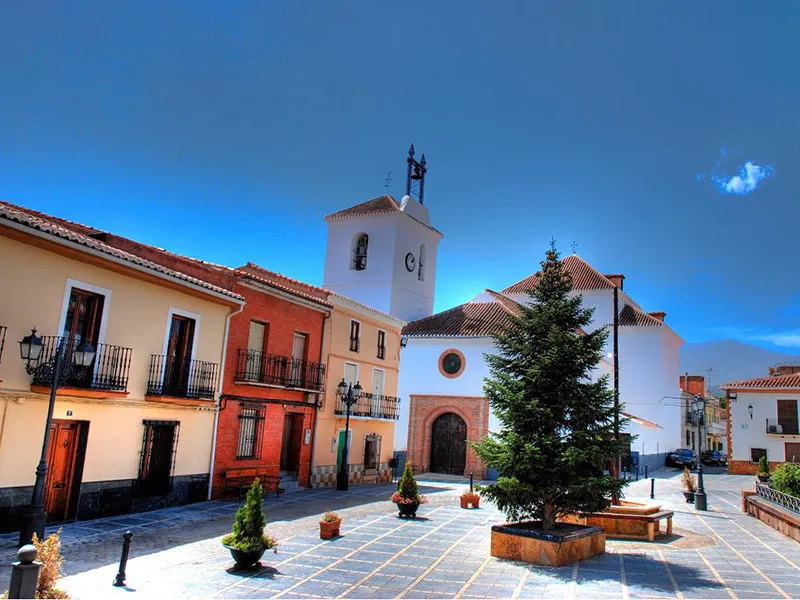
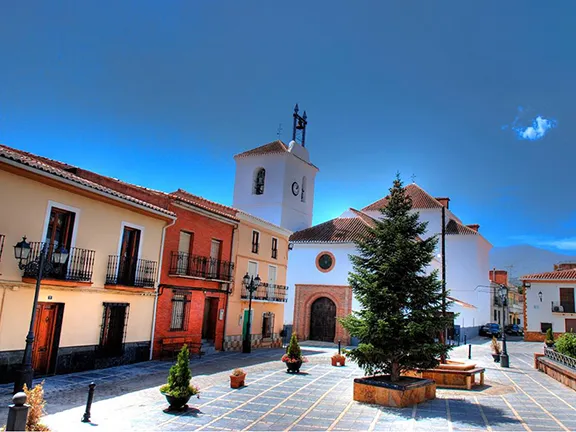
Alquife Town
The Marquesado Mining District surrounding the town of Alquife is on the northern flanks of the Sierra Nevada south of Guadix. The area has been mined for its prolific iron ore, in the form of haematite, since Roman times. The haemetite here has an unusually high concentration of iron. During the Muslim era a fortress was built at La Calahorra, a few kilometres east of Alquife, as part of the defensive system protecting this area from the Christian forces intent on capturing the area along with its precious metal ores. The original fortress was refurbished in the 16th century in the Italian Renaissance style and is now a prominent landmark.
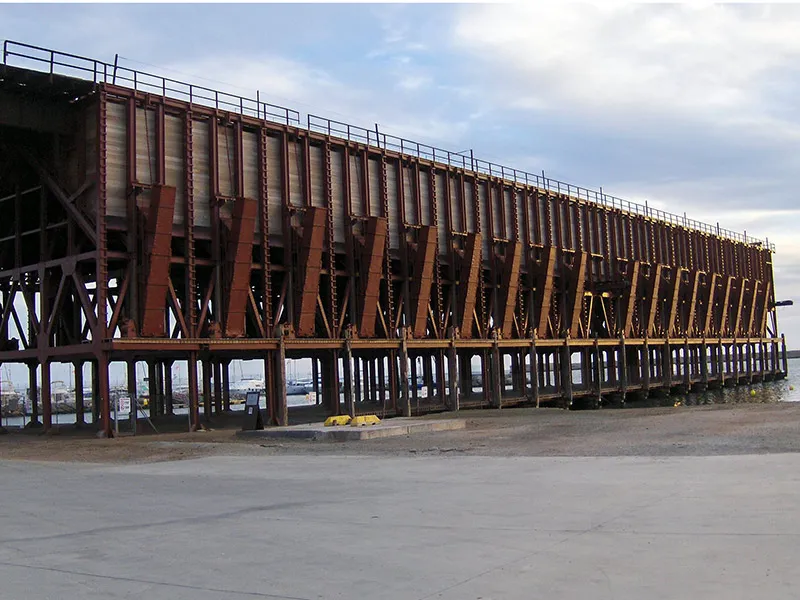
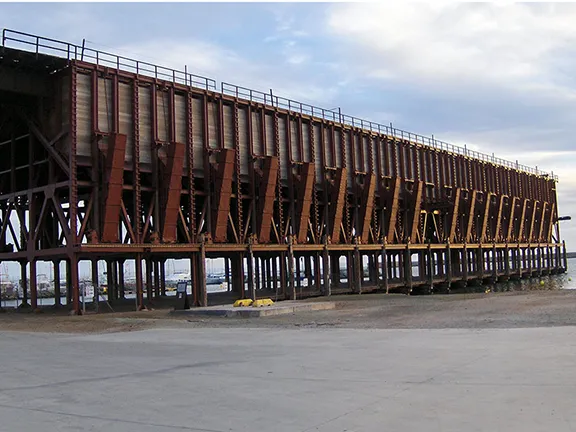
El Cable Ingles
In order to exploit the haematite deposits, it was first necessary to build a railway 11 kilometres between Alquife and La Calahorra to connect with the main line to Almeria. The job was completed by the Alquife Mines and Railway Company Ltd. that was registered in 1900 and was a partnership between the Millom and Askam Company of Cumberland and the Coltness Iron Company Ltd. of Glasgow. The ore was taken to Almeria port where it was loaded onto ore carrying ships using the ore loading terminal built by Alexander Findlay and Company of Scotland for the Alquife Mines and Railway Company, Ltd and known as ‘El Cable Ingles’. From there it was shipped to Millom to be smelted.
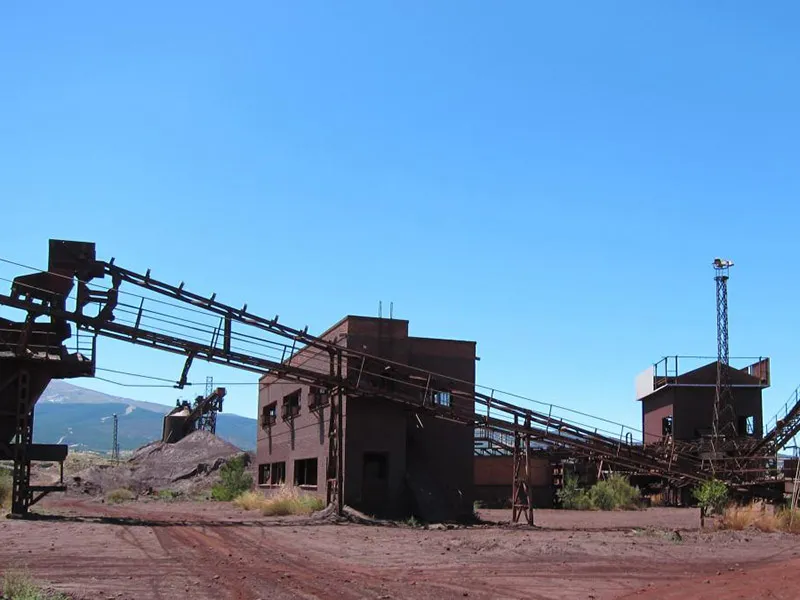
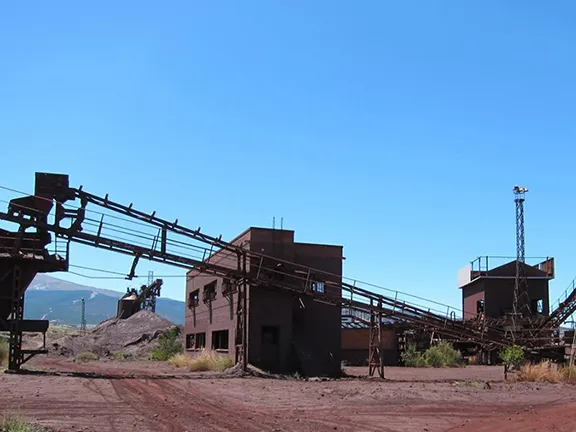
The quantities of iron ore from the mines at Alquife soon overwhelmed the storage facilities available at the port of Almeria. In 1904, ‘El Cable Ingles’, also known as El Alquife, was inaugurated by King Alfonso XIII. Permission to build the terminal was granted in 1902. In a supreme example of ‘taking coals to Newcastle’, the 3,824 tonnes of steel used to build the terminal were shipped in from the smelters at Motherwell in Scotland. The iron ore used to make the steel came from the mines at Alquife.
The terminal included 40 hoppers each capable of holding 250 tons that gravity fed the ore to the holds of ships below. The arrangement reduced the loading time of an 8,000 ton ship from eight days to 10 hours. El Cable Ingles remained in use until 1970 and is now (2020) an Asset of Cultural Interest undergoing renovation.
Output from the mines was much more than the company required so the excess was sold on the open market. By 1925 the Coltness Company had been bought out. Within Spain, there were issues with labour and strikes due to changes in government, political tensions, and a decline in industry. This led up to the Spanish Civil War of 1936 - 1939. The mining site remained surprisingly intact and continued to be worked after the peace. Due to nationalisation in 1951 the Alquife Mines and Railway Company Limited shares were transferred to a new holding company, the Alquife Ore Company Limited who in turn sold out to a Spanish company, Agruminsa in 1953.
Another British company also took an interest in the Alquife area. William Baird and Company Ltd, whom we last met at Cerro de Hierro in Seville province, operated the Pozo de Minas del Marquesado. They also built a spur line from the Almeria main line at Huenaja to the mine and a separate pier at Almeria port for transhipping the ore to the ships. The Minas del Marquesado company passed into the hands of the Compañía Andaluza de Minas who abandoned the original galleries and started open cast mining. Andaluza de Minas was owned jointly by Golden Shamrock Mines Ltd and Banco Hispano Americano. In 1967 the mine produced 1 million tons of ore. This increased to 3.7 million tons per year. The ore was transported by 12 trains per day, each with 23 wagons.
All the mining companies in the area were acquired by the Compañía Andaluza de Minas in 1984 who continued mining operations until 1996. The whole Marquesado Mining District and the town of Alquife, once a red, dusty place and now a pristine pastel coloured environment, are now part of the preserved Coto de las Minas de Alquife heritage area.
This is a list of the British registered mining companies that came and went in Granada province. Some prospered, some never got started. There may well be others missing from the list. I have only included those for which there is conclusive information.
Readers should also note that there is little mention of other foreign influence. The French, German and Belgians were also actively involved in mining and providing the mining infrastructure such as railroads and mining machinery, all areas for future research.
Alquife Mines and Railway Company, Ltd Registered: 1900 Dissolved: 1972 Mines in the district of Alquife, Granada and railway between Alquife and Lacalahorra
Andalusian and General Syndicate, Ltd. Registered: 1905 Originally registered as the Granada-Motril Syndicate, Ltd. - Name changed to Andalusian and General Syndicate, Ltd., November 1905
Colonia Syndicate Ltd Almeria & Granada Finana Registered:1896 Dissolved: 1901 Mari y Juanita, San Miguel; Juan; Thomas, Juan Vidal y Lopez, El Escabrial and Juanita.
Electrolytic Company (Spain and Portugal) Ltd. Registered: 1908 Three copper mines in Granada Province: San Antonio de Padua; Magdelana; Maria de la Paz.
National Spanish Silver Lead Mines and Mining Company, Ltd. Registered: 1911
San Roberto Gold Mines Syndicate, Ltd. Registered: 1893
Tablas-Finana Copper Company, Ltd. Registered: 1899 Dissolved: 1910 Bought mines from the Colonia Syndicate Ltd.
United Mercury Mines of Granada Ltd. Registered: 1903 Castaras, Lobras, Timor, Pubiles and Nieles
References and further reading
Martín, José. (2000). The gold of Granada: Geology and history. Boletin Geologico y Minero. 111. 47-59.
Vernon, Robert. (2003). Beyond Huelva: Other British Mining Legacies in Andalucia, Spain.
Vernon, Robert. (2006). British archival information relating to mining operations in Spain and Portugal. An overview with examples from Andalucia.
Vernon, Robert. (2016). English miners in Spain during the 19th century - Mineros ingleses en España durante el siglo 19.
Vernon, Robert. (2017). Database of British Registered Mining Companies formed to acquire, and work mines, in Spain and Portugal.
Cumbria Archive Service Catalogue Reference BDB 47 - Millom Hematite Ore and Iron Company Limited (and associated companies) - 1824 - 1970